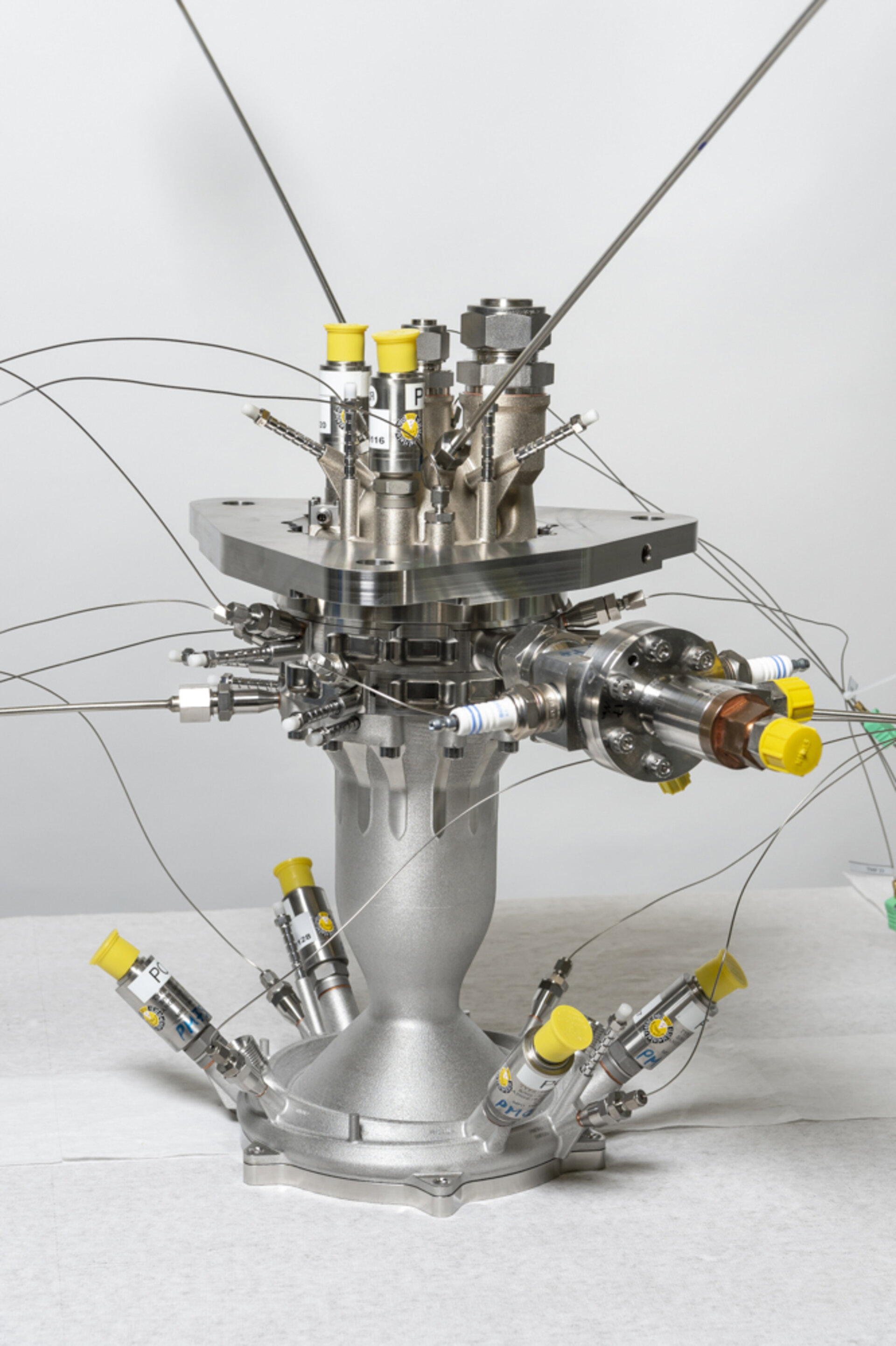Versatile, green rocket engine gets go-ahead from ESA
ESA and ArianeGroup are moving forward with the development of a new engine suitable for use in small upper rocket stages – or as a “kick stage” capable of placing satellites into several target orbits from a single launch. This highly versatile engine concept features extensive use of components made by 3D printing, to increase manufacturing flexibility and reduce costs, and of propellants which are safer and easier to store than the toxic chemicals currently in use.
The “BERTA Green” engine is an extension of the BERTA project, a 5kN-thrust engine using classical storable propellants; that is, propellants which can be stored as liquids at near room temperature and pressure. This engine was developed and tested within ESA’s FLPP (Future Launcher Preparatory Programme). The original BERTA engine is now being applied to the future Ariane 6 kick-stage, ASTRIS. The name BERTA comes from the German acronym for bi-propellant rocket propulsion, as the work has been performed by ArianeGroup’s site in Ottobrunn, Bavaria.
As a first extension of the original BERTA project, a 3D-manufactured combustion chamber assembly designed for storable propellants was hot-fire tested in 2019. That combustion chamber, tested by ArianeGroup Germany at the Lampoldshausen rocket engine centre of Germany’s DLR aerospace agency, had a reference thrust of 2.5kN. But now, ESA Director of Space Transportation Daniel Neuenschwander and ArianeGroup Germany Chief Executive Pierre Godart have signed at Oberpfaffenhofen, in Bavaria, a Memorandum of Understanding to proceed with development of a green demonstrator engine with a reference thrust of 5kN, the same as the original BERTA engine.
The goal of the programme – known as BERTA Green – is to proceed with the design, manufacture, assembly, integration and hot-fire testing a full-scale, green propulsion demonstrator engine. Today’s agreement between ESA and ArianeGroup, to manufacture and hot-fire test the demonstrator engine, continues on work performed since 2018 on the identification of potential green propellants and the design of an associated engine.

Additive layer manufacturing – so-called 3D printing – is an important technology for the BERTA Green project. This technique allows engineers to design structures with fewer parts and more complex internal structures than can be achieved with traditional “subtractive” manufacturing technologies. And, 3D printing can deliver significant cost reduction in serial manufacturing.
A BERTA engine must satisfy a broad range of mission requirements and be able to re-ignite several times in the vacuum of space, for example to place multiple satellites into different orbits. Future versions of ESA rockets, kick-stages or even exploration missions may incorporate this versatile engine.
Critically, the concept is devised around “green” and storable propellants. Liquid rocket fuels used today for European launchers are hydrogen and oxygen, which are only liquid when kept ultra-cold – and are hence difficult to store for extended periods. Fuels which are storable at near-room temperature and pressure, such as hydrazine and nitrogen tetroxide, are toxic to human beings and the environment. The green and storable fuels under investigation promise not only to reduce toxicity but also to cut the cost of handling.
Neuenschwander remarked: “To be both sustainable and cost-effective, our launch vehicles must be both green and versatile. In Europe we have demonstrated that we have the technical capability to be leaders in this regard, so I am delighted to be pressing forward with this initiative.”















 Germany
Germany
 Austria
Austria
 Belgium
Belgium
 Denmark
Denmark
 Spain
Spain
 Estonia
Estonia
 Finland
Finland
 France
France
 Greece
Greece
 Hungary
Hungary
 Ireland
Ireland
 Italy
Italy
 Luxembourg
Luxembourg
 Norway
Norway
 The Netherlands
The Netherlands
 Poland
Poland
 Portugal
Portugal
 Czechia
Czechia
 Romania
Romania
 United Kingdom
United Kingdom
 Slovenia
Slovenia
 Sweden
Sweden
 Switzerland
Switzerland


























